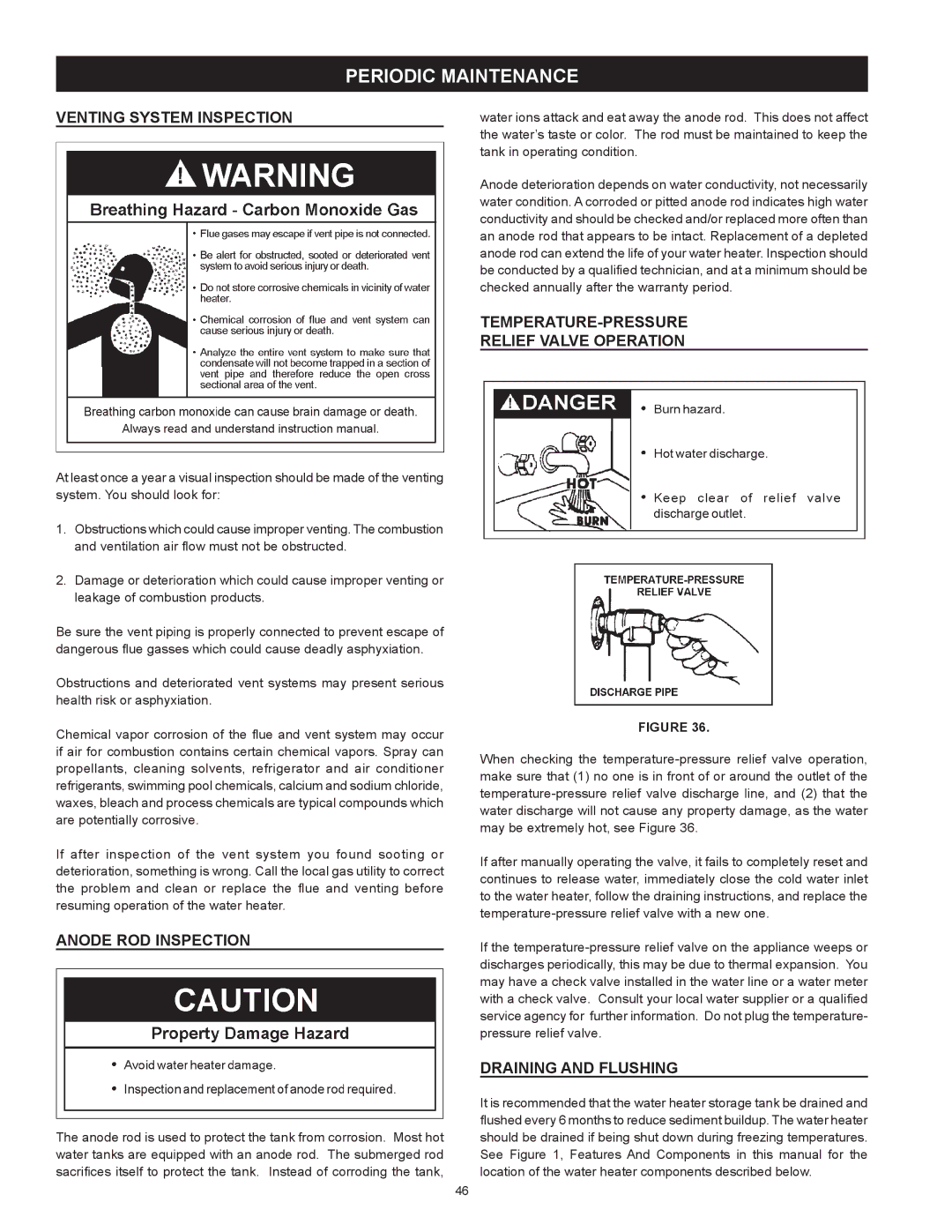100 Power Vent DV Series 120, 317443-000 specifications
The A.O. Smith 317443-000,100 Power Vent DV Series 120 is an advanced water heating solution designed to enhance efficiency and performance for residential applications. As part of A.O. Smith's renowned lineup, this model embodies the company's commitment to innovation and energy conservation.One of the main features of the DV Series 120 is its power venting capability. This technology allows for flexible installation options, as it can vent vertically or horizontally, accommodating various home configurations. It utilizes a fan-assisted venting system, which efficiently expels exhaust gases, ensuring safe operation even in tight spaces.
The unit's energy efficiency is another standout characteristic. Equipped with a high-efficiency gas burner, the DV Series 120 optimizes fuel consumption, resulting in lower utility bills while providing reliable hot water when needed. Its impressive Energy Factor (EF) ratings make it an environmentally friendly choice, aligning with modern standards for green building practices.
Durability is also a significant focus of the A.O. Smith 317443-000,100 Power Vent model. Constructed with a glass-lined tank and a robust anode rod, this water heater is designed to resist corrosion and extend its lifespan. This construction enhances performance reliability while minimizing maintenance needs, making it a smart investment for homeowners.
Smart technologies are integrated into the DV Series 120, featuring an intelligent control system that provides various operational insights. The built-in diagnostic features allow homeowners to monitor performance and identify potential issues early, reducing the likelihood of unexpected failures. This control system can also enable more precise temperature management, enhancing both comfort and efficiency.
Safety is paramount in the design of the A.O. Smith 317443-000,100. The unit comes equipped with safety features such as a built-in flame rollout sensor and an automatic shut-off system to protect against potential hazards. These features ensure peace of mind for users, allowing them to confidently rely on their hot water supply.
In summary, the A.O. Smith 317443-000,100 Power Vent DV Series 120 stands out as a high-efficiency water heating solution, combining innovative venting technologies, durability, smart features, and safety mechanisms. This model is an ideal choice for homeowners seeking a reliable and efficient hot water system that meets modern energy standards.

